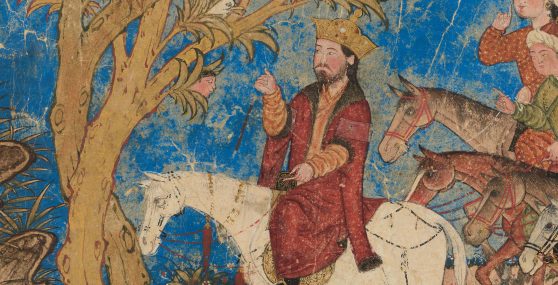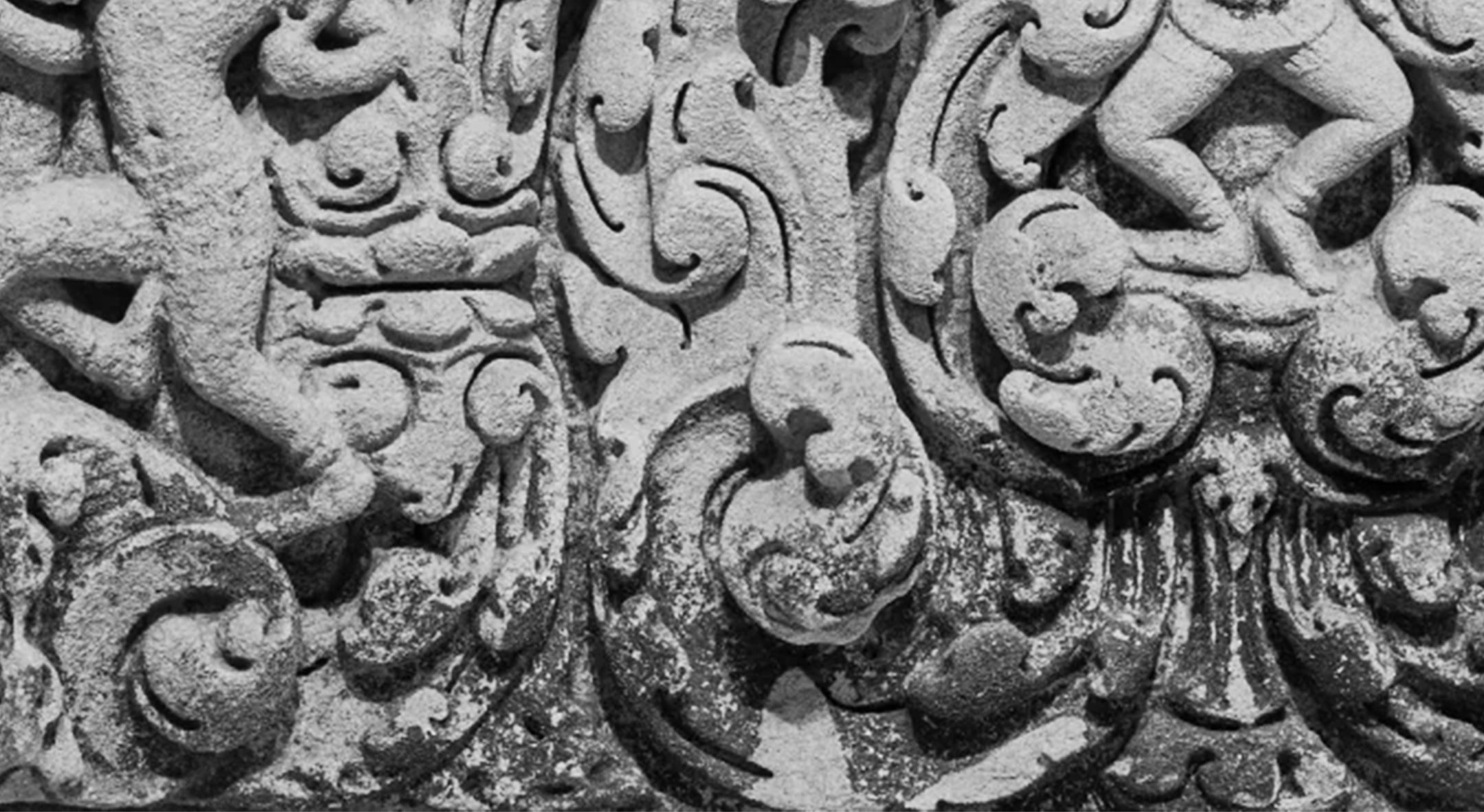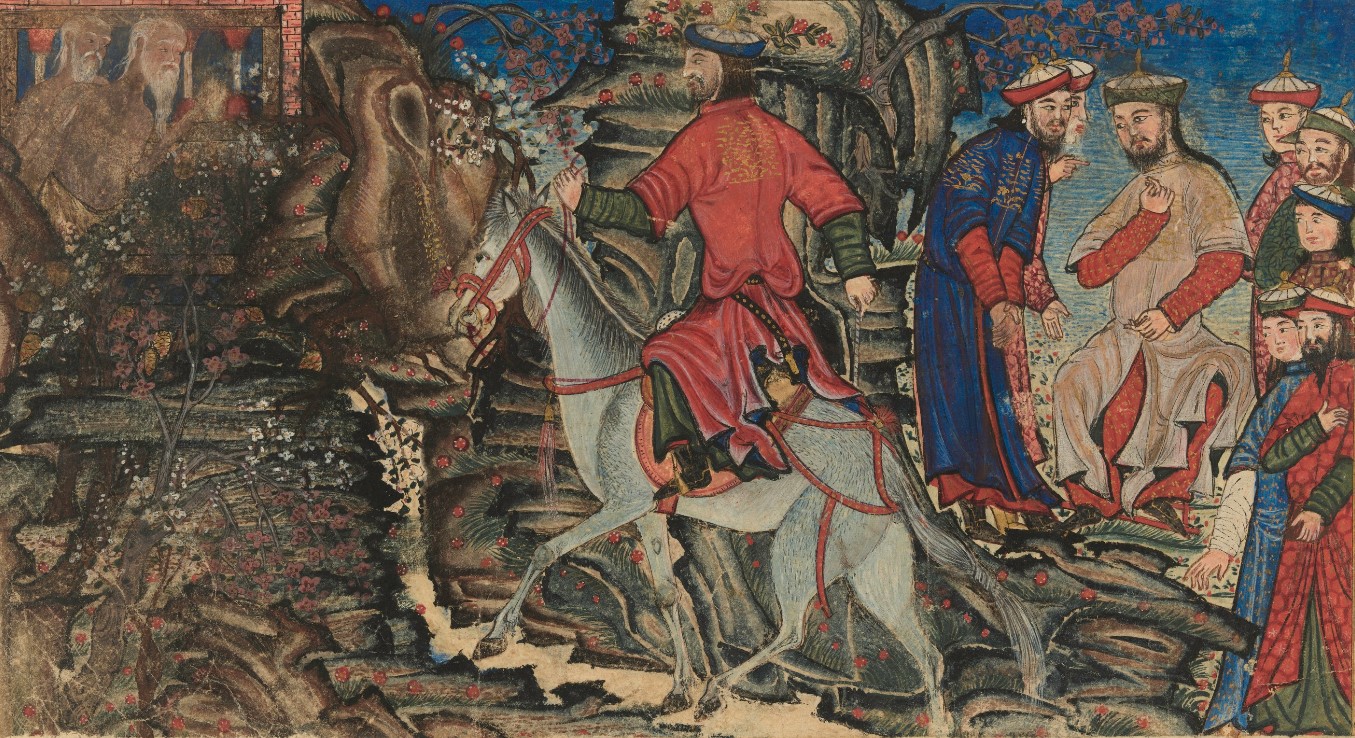「有人能夠超越《神曲》中的一位偉大人物,這似乎令人難以置信,也確實如此,」豪爾赫·路易斯·博爾赫斯在其《但丁九論》中寫道,「然而,這一壯舉已經發生。」博爾赫斯指的是中世紀伊朗詩人阿塔爾的寓言《眾神》(Manteq al-Tayr),以及神話的高潮波斯文學中的神話。從魯米到博爾赫斯,再到波羅奇斯塔·卡克普爾,許多作家都曾從阿塔爾及其崇高的《雄鷹》中汲取靈感,這首詩描繪了分裂世界中的和諧統一。八個多世紀過去了,隨著伊朗裔美國詩人肖萊·沃爾佩(Sholeh Wolpé)推出激動人心的新譯本,阿塔爾的《雄鷹》仍然與我們這個變革與挑戰的時刻對話:一個來自截然不同卻又與時俱進的動人而又令人不安的理想。 法里德·烏德丁·阿塔爾是 12 世紀伊朗尼沙普爾的藥劑師和詩人,他創作了《百鳥會》,作為靈魂通往神聖之旅的蘇菲派寓言,其中神鳥是世界鳥類的偉大國王。鳥兒們指望戴勝鳥——所羅門王最喜歡的鳥類信使,引導他們前往加夫山上的神鳥之家。鳥兒們向戴勝鳥傾訴他們的恐懼、藉口、渴望和依戀,戴勝鳥責備他們摧毀他們的自我,陷入對神聖的狂喜而非理性的愛。戴勝鳥用一系列關於這種不太理智、常常令人震驚的愛情的寓言來說明每一個教訓:有國王愛上了男僕;有蘇菲派酋長為了愛上一個基督教女孩而叛教;有血淚,有剝皮,還有各種形式的聖愚狂喜地自我貶低。阿塔爾要我們明白,道不受邏輯、世俗的審慎,甚至宗教正統觀念的束縛。一切形式的自我都必須犧牲,即使是正直的自負。 戴勝的教訓讓鳥兒們驚恐萬分,有些當場死去。剩下的鳥兒經歷了無數的磨難和寓言般的地形,這些地形的名字包括“探索之谷”和“貧困與毀滅之谷”。最終,在10萬名朝聖者中,只有30人到達了卡夫山。在旅途中,他們得到了淨化和磨練,看到了Simorgh:卻只在湖水中看到了自己的倒影。阿塔爾巧妙地運用了語言:波斯語中的si morgh意為「30隻鳥」。所有的鳥都是Simorgh; 《Simorgh》就是它們。博爾赫斯欽佩阿塔爾簡潔的敘事:“巧妙地,追尋者就是他們所追尋的。” 蕭萊·沃爾佩令人驚豔的新譯本——30多年來的首部譯本——以機智和華麗的筆觸演繹了阿塔爾引人入勝、獨特的視角。作為中世紀伊斯蘭寓言史詩的譯本,《群鳥會》也極具可讀性。沃爾佩提供了章節提綱和標題來引導讀者;她也巧妙地將寓言以散文的形式呈現,強調了其實質主題,而鳥兒的話語則保留了清晰活潑的詩句。作為第一位以波斯語為母語的譯者,也是第一位翻譯《會》的女性,她將“Simorgh”(和“上帝”)等無性別的波斯語名詞翻譯得通順,沒有像西方人那樣使用令人反感的“默認”陽性詞。 (在原版神話中,Simorgh 顯然是一位女性神祇。)最重要的是,沃爾佩並非將阿塔爾的傑作視為來自遠古時代的珍品,而是將其視為一部鮮活智慧的文本,其寓意始終與時俱進。 在敵對勢力和極端主義「擁護者」將伊斯蘭教描繪成一種充滿嚴酷教條、僵化教條的宗教的時代,阿塔爾的宗教信仰如同一股動人的自由之風。對阿塔爾而言,正統不過是又一種自私的執念,必須將其粉碎,才能為神性騰出空間。這番斥責適用於各種派別和信仰的教條主義者。 阿塔爾的寫作背景是特定的宗教,而沃爾佩則選擇了普世的術語來描述神性,強調其通俗易懂而非循規蹈矩。會議並非真正面向博爾德和大瑟爾那些自詡神秘主義者,而是面向一個被物質主義、恐懼和自以為是所困擾的世界,一個被一種有害的個人主義所困擾的世界,這種個人主義崇尚個人利益而非公共利益。 沃爾佩的翻譯恰逢其時,我們選出了一位似乎集所有這些特質於一身的總統,而我們許多人正努力面對國家安逸、安全、繁榮和理想主義的喪失。會議不僅譴責了這個時代那些傲慢的煽動家,也刺激了那些想要行善卻害怕失去看似安全感和幸福的冷漠之人:那些只要#抵抗#仍然是一個標籤就無所謂的人。藥劑師阿塔爾有力地論述了看待事物過於狹隘的弊病,這種弊病折磨著我們所有人,而作為一種治療方法,他提出了一種對他者、更偉大、更重要的事物的徹底開放的態度。 “群體行善或作惡,並非以鬆散的個體形式,而是以運動、選民和經濟體的形式。”“That anyone has ever been able to surpass one of the great figures of the Divine Comedy seems incredible, and rightly so,” wrote Jorge Luis Borges, in his Nine Essays on Dante; “nevertheless, the feat has occurred.” Borges was speaking of the medieval Iranian poet
Attar’s allegorical epic, Manteq al-Tayr, or
The Conference of the Birds, and the magnificent image that caps the poem, of the mythical bird-deity of Persian literature, the Simorgh. Writers from
Rumito Borges to
Porochista Khakpourhave drawn on Attar and his sublime Simorgh, a vision of coherence in a divided world. Over eight centuries later, and with an exciting new translation
released, by Iranian-American poet Sholeh Wolpé, Attar’s Simorgh still speaks to our moment of change and challenge: a moving and unsettling ideal from a very different, but very relevant time and place.
Farīd Ud-Dīn Attar, a pharmacist and poet in 12th-century Nishapur, Iran, composed The Conference of the Birds as a Sufi allegory for the soul’s journey to the Divine, with the Simorgh cast as the great king of the birds of the world. The birds look to the
hoopoe, King Solomon’s favorite avian courier, to guide them on the Way to the Simorgh’s home on Mount Qaf. The birds present their fears, excuses, longings, and attachments to the hoopoe, who upbraids them to demolish their egos and fall into an ecstatic, irrational love with the Divine. The hoopoe illustrates each lesson with a series of parables on this not-quite-sane, often shocking love: there are kings who fall in love with male servants; there’s a Sufi sheikh who apostatizes for love of a Christian girl; there are blood-tears, and flayings, and every manner of holy fools ecstatically degrading themselves. The Way, Attar wants us to understand, is not confined by logic, worldly prudence, or even religious orthodoxy. Every form of ego must be sacrificed, even the conceit of rectitude.
The hoopoe’s lessons unnerve the birds so violently, some die on the spot. The remaining birds journey through countless ordeals and allegorical terrains with names like the Valley of the Quest and the Valley of Poverty and Annihilation. In the end, out of 100,000, only 30 pilgrims reach Mount Qaf. Purified and chastened by the journey, they behold the Simorgh: only to see their own reflection in the lake waters. Attar reveals his clever twist of language: si morgh, in Persian, means “30 birds.” All the birds are the Simorgh; Simorgh is them. Borges admired Attar’s economy of narrative: “adroitly, the searchers are what they seek.”
Sholeh Wolpé’s stunning new translation—the first in over 30 years—renders Attar’s engaging, singular voice with wit and flourish. As medieval Islamic allegorical epic translations go, The Conference of the Birds is also highly readable. Wolpé provides section outlines and headers to orient readers; she also makes the brilliant choice of presenting the parables as prose, emphasizing their substantive themes, while the birds’ speeches remain in a clear and lively verse. The first native Persian speaker and first woman to translate Conference, she renders genderless Persian nouns like “Simorgh” (and “God”) without that irritating Western resort to the ‘default’ masculine. (In the original mythology, the Simorgh is quite clearly a
female deity.) Most importantly, Wolpé offers Attar’s masterwork not as a curiosity from a bygone age, but as a text of living wisdom whose message is always timely.
At a time when Islam is being presented both by hostile forces and extremist “champions” as a religion of grim, inflexible dogmas, Attar’s religiosity is a moving breath of freedom. For Attar, orthodoxy is just one more egoistic attachment that must be shattered to make room for the Divine. It’s a rebuke fit for dogmatists of every stripe and creed.
And while Attar wrote in a specific religious context, Wolpé chooses universal terms for the Divine, emphasizing accessibility over scholasticism. Conference isn’t really for would-be mystics in Boulder and Big Sur, but for a world beset by materialism, fear, and self-righteousness, by a damaging individualism that celebrates getting one’s own over the common good.
Wolpé’s translation comes right as we’ve elected a president who seems to embody all those things, and as many of us struggle to face the loss of national comforts, security, prosperity, and idealism. The Conference doesn’t just rebuke the proud demagogues of the age, but also goads the lukewarm who want to do good, but fear losing what looks like safety and happiness: those who are fine with #TheResistance, so long as it remains a hashtag. Attar the pharmacist writes powerfully about the disease of taking too small and close a view of things, a disease which afflicts all of us, and as cure proposes a radical openness to the other, the greater, and the more important.
“Populations do good or evil en masse: not as loosely affiliated individuals, but as movements, electorates, and economies.”
This cure plays out in unexpected ways within Attar’s surprisingly frequent trope, running through the parables, of an erotic drama between a king and his beautiful servant. Sometimes, the king is a clear allegory for the Divine, and his servant’s devotion or fickleness is raised as a model or warning. But other parables feature memorably unpredictable, dangerous, and foolish kings. In one, a king falls in love with “his silver-bodied servant,” and favors him by practicing archery, William Tell-style, with an apple balanced on the youth’s head. “In the meantime, I writhe,” the boy says, “my life always in danger for nothing at all.” These kings are living, strutting egos, embodying the pride and worldly anxiety the Wayfarer must repudiate.
The greatest sovereign in the poem, of course, is the Simorgh, who paradoxically is the pilgrim birds and their sovereign at once.
In his 1948 essay “The Simorgh and the Eagle,” Borges compared the paradox of Attar’s Simorgh to the Eagle in
Dante’s Paradiso, in which thousands of righteous biblical and classical kings appear flying in eagle-shaped formation through the Heaven of Jupiter. “In the abstract,” Borges concedes, “the concept of a being composed of other beings does not appear promising,” citing the grotesque, composite allegory of
Rumorin the Aeneid. But Borges praises the Eagle and the Simorgh as “one of the most memorable figures in Western literature, and another of Eastern literature,” while granting the advantage to Attar’s Simorgh:
The Eagle is merely implausible; the Simorgh, impossible. The individuals who make the Eagle are not lost in it (David serves as the pupil of one eye; Trajan, Ezekiel, and Constantine as brows); the birds that gaze upon the Simorgh are at the same time the Simorgh. The Eagle is a transitory symbol . . . ; those who form its shape with their bodies do not cease to be who they are; the ubiquitous Simorgh is inextricable.
This democratic corpus of Attar’s Simorgh contrasts with the tyrants in his parables, who marshal the collective force of their subordinates in service of their singular wills. It’s an especially potent contrast in our particular American political moment, as we watch our corporate CEO of a president wrangle with courts and entrenched bureaucracies while mass protests unfold in city centers. Trump is ego incarnate (some might say idincarnate), while the protestors—especially in the photos from the
Women’s Marchin city after city—take on a composite, “inextricable” identity.
Attar’s image of the Simorgh captures something profound about how, especially today, populations do good or evil en masse: not as loosely affiliated individuals, but as movements, electorates, and economies. The complex ethics of the individual’s tiny, marginal impact on enormous moral events—whether it’s commuters taking the bus to fight climate change, or young people buying health insurance to lower the cost for everyone—is still being developed, and proving one of the most divisive flashpoints in the political landscape.
Attar doesn’t provide a solution to this question, but The Conference of the Birds does offer insight into the emotional and spiritual experience of this composite identity. It involves transcendence but also an annihilation of sorts, like any honest mysticism. It involves hardships and the loss of everything we cling to in order to feel better about ourselves. But the alternative is living falsely, attached to paltry, fleeting, even treacherous advantages, “always in danger for nothing at all.” Wealth, power, status, ostentation, the fear and respect of others: I look at Trump, I read and hear what he says, and I see a deeply unhappy man made more miserable by these things and his dread of losing them. As Attar tells us:
All that you have uttered,
all that you have heard,
all that you knew,
and all that you have seen,
all of it from the very start
is just the beginning of the fairy tale.
Disappear. This ruin is not your abode.
What matters is the essence of truth . . .
When the True Sun shines eternal,
does it matter if here is an atom
or here, its shadow?
Then, there are the faces of the marchers and protestors, unconcerned—at least for one cold Saturday morning, at least some of them—with anything like power and wealth, but caught up in the energy of the movement. Protests are, at their best, spectacles of affinity and unity; people see how many others, and how many different others, come together for something greater than themselves. “This is not a place of uniformity; here you find unity in diversity,” Attar writes of the Valley of Unity, the allegorical space where pilgrims shed the illusion of separateness.
That’s a profoundly hopeful vision for a country divided by media “bubbles” and polarization. It’s a hopeful vision for all of us.
話說伊朗波斯文學當中有幾個知名的愛情故事,接下來幾篇準備來一個一個介紹,今天就從《列王紀》中的 Zal 跟 Rudabeh 開始,他們最知名的事蹟在於生下了波斯史詩第一英雄魯斯坦。
相傳 Zal 王子出身於英雄世家,家人都在波斯軍隊擔任將軍,因為出生時一頭白髮所以被命名為 Zal。因為長相奇特,父親把他丟棄在伊朗最高峰,結果反而遇到波斯聖鳥 Simurgh,由聖鳥撫養長大,這可謂人生開局就有奇遇。
後來父親聽到Zal 被聖鳥撫養的傳聞,到山下祈求天神原諒後接了 Zal 下山,並盡力補償過錯。臨走前,聖鳥給予 Zal 一支羽毛,若有危機情況可以拿出來召喚它。
數年後一年,父親出外征戰,Zal 代理王位,開始巡視東部省份,意外獲知喀布爾的統治者的女兒 Rudabeh 美若天仙,Zal 頓時陷入戀愛。
《列王紀》這麼描述 Rudabeh 的美貌,難怪 Zal 光看畫像就暈船。
「她的嘴唇如石榴花般嬌美,唇如櫻桃,她那銀色的胸膛曲線優美,雙乳如同石榴般飽滿。
她的雙眼宛如花園中的水仙花,睫毛的黑色似乎源自烏鴉的翅膀。
她的眉毛如特拉茲的弓般精心描繪,輕撒細粉,優雅地染上麝香色。
如果你尋找皎潔的明月,那就是她的面容;如果你渴望麝香的芬芳,它隱約停留在她的秀髮中。
從頭到腳,她宛如一座被鍍金的天堂,滿溢光輝、和諧與歡愉。」
在這幅細密畫中,Zal 來到喀布爾 Rudabeh 的樓下,用著自己帶的繩索爬進 Rudabeh 房間,兩人成為愛侶。
不過 Zal 的父親聽聞此事勃然大怒,因為喀布爾的統治者是蛇王扎哈克的後代,幾個世代被波斯英雄 Fereydun 所擊敗,而 Fereydun 的曾孫 Manuchehr 是當今波斯帝國的統治者,對於世代為波斯軍隊服務的父王來說是屬於不得體的行為,因此強硬地拒絕了 Zal 的婚姻請求。
不過在 Zal 的強烈要求下,這是鬧到了Manuchehr 皇宮做仲裁。Manuchehr 要求 Zal 展現武藝以及回答艱難的問題。在打敗皇宮當中最強的勇士以及出色回答問題後,波斯沙王Manuchehr 同意了這門婚事。
Zal 與 Rudabeh 成功地在喀布爾舉行婚禮,而洞房花燭夜那晚,Rudabeh 懷上了英雄魯斯坦。當要生產時,Rudabeh 出現難產,這時 Zal 拿出當初聖鳥送的羽毛,聖鳥讓 Zal 用羽毛進行剖腹產才順利完成生產,讓母子均安。聖鳥真是庇護了 Zal 兩代父子。
《列王紀》(
波斯語:شاهنامه、Šāhnāmeh),亦被稱為《王書》、《列王書》、《諸王之書》,其是
波斯民族的
史詩。
An Epic of Kings: The Great Mongol Shahnama
…
ExhibitionsAn Epic of Kings: The Great Mongol Shahnama


Alexander the Great between East and West
Date
Tuesday, October 29, 2024
12:00 pm–1:00 pm
Location
Zoom
Description
Throughout history, many authors have recounted Alexander the Great’s deeds and quests, real or fictional. In Iran, Alexander is known as Iskandar, and because of his Persian ancestry he is recognized as a legitimate ruler. In Europe, he is a model of virtue and piety for Christian rulers. In both traditions, Alexander is a relentless adventurer who journeys to the end of the world in an unsuccessful quest for immortality. Join curator Simon Rettig and professor Mark Cruse as they explore Alexander’s centrality in the cultures of the global late Middle Ages, focusing on fourteenth-century illustrated manuscripts of Firdawsi’s Shahnama (Book of kings) and copies of the Romance of Alexander from the contemporaneous Latin West.
This program is held in conjunction with the exhibition An Epic of Kings: The Great Mongol Shahnama, on view from September 21, 2024, to January 12, 2025.
 A 19th- or 20th-century Chinese painting of Leigong, the god of thunder, who is typically depicted with bat wings and a bird beak.Credit...The Trustees of the British Museum
A 19th- or 20th-century Chinese painting of Leigong, the god of thunder, who is typically depicted with bat wings and a bird beak.Credit...The Trustees of the British Museum


沒有留言:
張貼留言